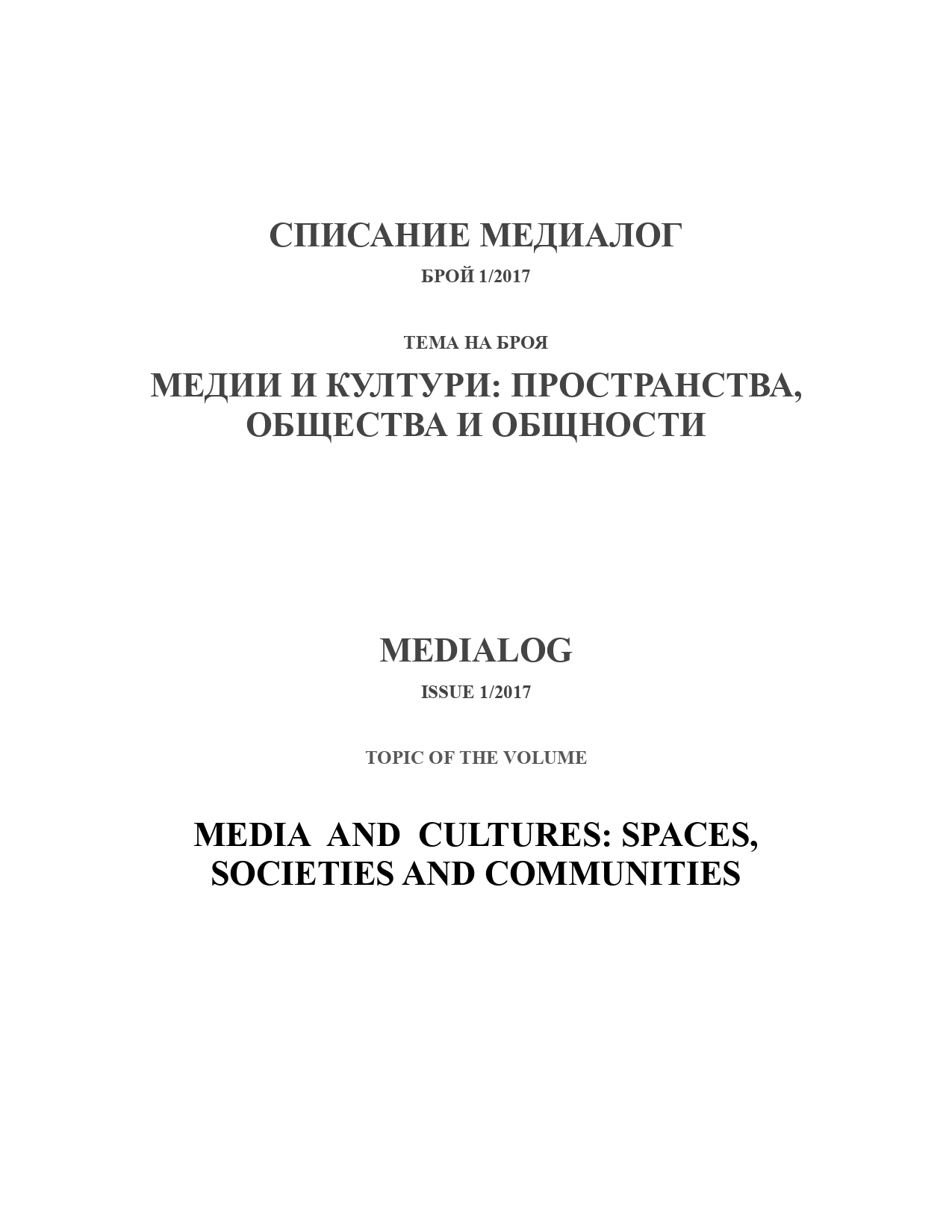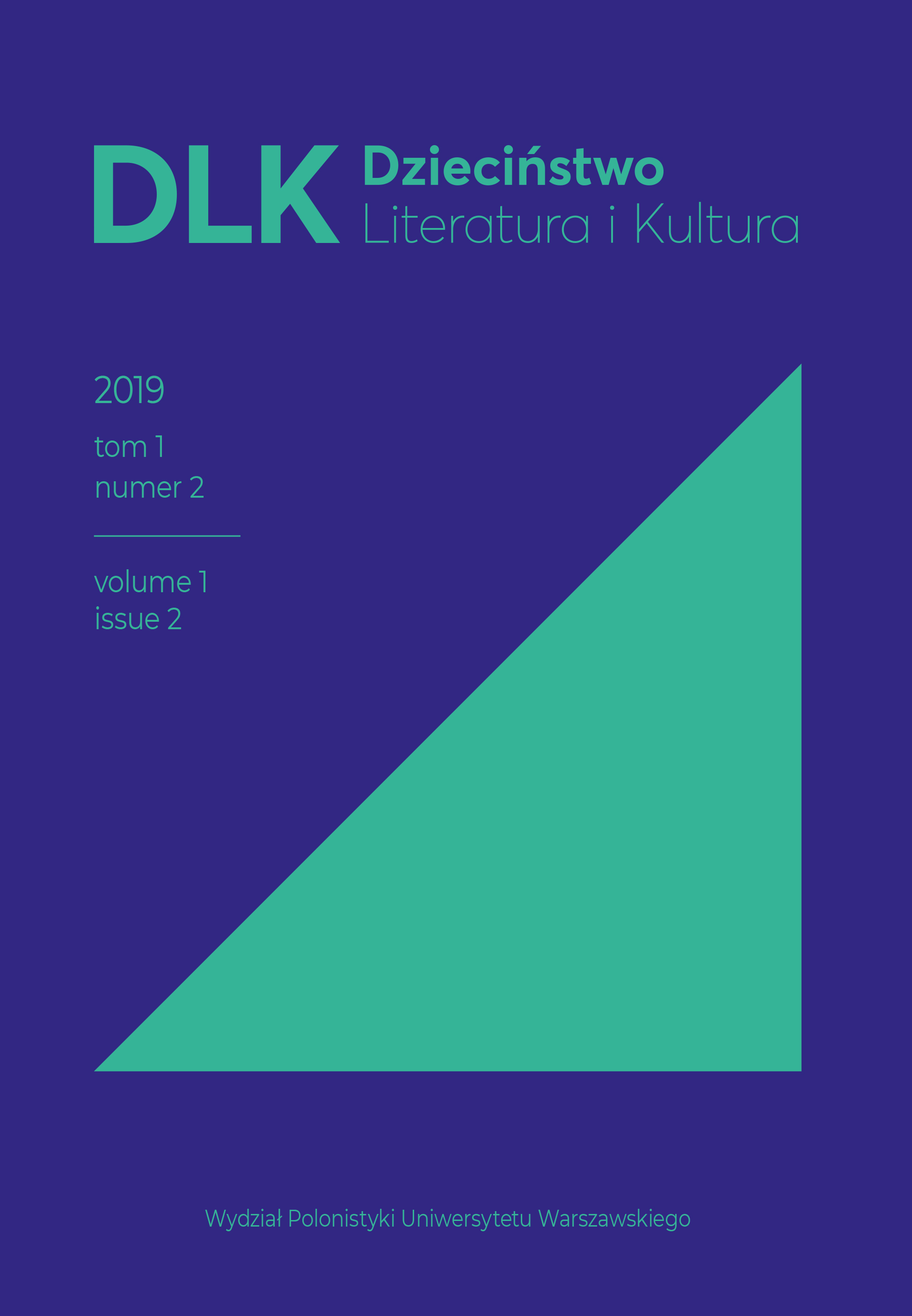
Научна периодика 2011–2012 г.
Content of the main Bulgarian scientific journals for the current year in linguistics, literature, history, folklore, ethnography, archaeology and art studies
More...We kindly inform you that, as long as the subject affiliation of our 300.000+ articles is in progress, you might get unsufficient or no results on your third level or second level search. In this case, please broaden your search criteria.

Content of the main Bulgarian scientific journals for the current year in linguistics, literature, history, folklore, ethnography, archaeology and art studies
More...
This article introduces Tod Browning’s 1932 film Freaks, in conversation with nineteenth century carnival and fair practices and further explains the creation and development of the freakshow. In tandem with theoretical work by authors such as Judith Butler, Rosemarie Garland-Thomson, Adrianna Cavarero and Lennard Davis, the article positions the freakshow within disability and trauma through the notions of ‘staring’, ‘normal’ and ‘horrorism’. Using two contemporary texts such as American Horror Story: Freakshow and the reality television series Freakshow, this article firstly introduces these texts thematically before analysing all three in conversation with one another as a means of further contextualizing the role of the freakshow in contemporary cultural products, then connecting these texts to the notion of violence and the use of disability as a tool for horror. The article concludes that although the freakshow has been dismantled in the literal sense, the obvious bodily difference that predicates it still remains present in today’s cultural sphere.
More...
Selected bibliography in the field of Bulgarian Studies published in the current year.
More...
Defended Ph.D. theses in Bulgaria in the field of linguistics, literature, history, folklore, ethnography and art studies.
More...
The introductory article of the first issue of 'Medialog' journal presents the new academic journal, part of a new media culture portal. 'Medialog' is a journey into the media worlds. 'Medialog' is an invitation to dialogue addressed to academic researchers and university lecturers, PhD students and students; to all who are curious to understand something more and different about media, communications and culture.
More...
Selected bibliography in the field of Bulgarian Studies published in the current year
More...
A review of Ivaylo Dichev’s book „Cultural scenes of the political”
More...
The aim of this article is to present the results of the author’s profound investigation on German-Bulgarian cultural relations since the beginning of the 20th century to the mid-1940s of the 20th century and to give an assessment of the cultural contacts between both countries in the context of Bulgarian political and historical development. The article reveals different aspects of the cultural contact between Germany and Bulgaria in the fields of theatre, fine and applied arts. The author emphasizes the role of the training of many Bulgarian artists in German art institutions and the establishment of German-Bulgarian cultural associations. The article is based on the findings of published studies as well as on the author’s own research undertaken in many museums, archives, private and institutional art collections, situated in Germany and Bulgaria.
More...
The text analyzes specific examples from the festive life of the Hungarian cities of Mohács and Debrecen and in particular different manifestations of the contemporary masquerade game. The author pays attention to the construction of urban identity (part A) and searches for basic characteristics of the urban cultural space as a place of national memory (part B). The field research method is applied for the purposes of the present study. In conclusion it is noted that it is especially important for the participants to identify with a particular masquerade community that builds additional social networks outside of the carnival chronotope. The consistency with the culture and traditions of the city is also significant as far as these are manifestations of urban identity. The national identity finds expression in symbols and signs of the national manifested under conditions of deterritorialization. Through the self-perception of the people in the city (as people tied to it and belonging to it) and through their identification with it, the urban social space acquires its anthropological dimensions contributing to its unique spirit and particularity (genius loci).
More...
The article’s goal is to imagine a productive form of teaching creative writing as part of a Master's program in fields only remotely connected to literature and literary studies, such as digital media and videogames research. The text begins with a discussion on talent as the ability to perceive and submit to adequate and working models of writing. The topic is then further developed by analyzing talent within the framework of specific creative tools such as close reading and worldbuilding. Finally, the idea of creative writing as a model oriented and model guided activity is connected to the nature of the computer game as a space inhabited by a variety of new discourses, which the player - like a careful and attentive reader – has to learn to read and work with, thus making them part of her personal experience.
More...
A review of the collection “The Soft power of popular music in media (by examples from Bulgaria and the Balkans”, comp. Lozanka Peicheva. Sofia: “St. Kliment Ohridski” University Press, 2020 (160 p.). The collection is part of research collective’s work on the eponymous scientific project “The soft power of popular music in media (by examples from Bulgaria and the Balkans”, financed by the Bulgarian national science fund.
More...

Intensified cultural exchange in the twenty-first century lead to a specific process of globalization of musical folklore. That is why the preservation of valuable archaic traditions demands active endeavours.In 2018, in the Bulgarian village of Chavdar, an interactive Folklore Centre was founded. It offers interesting ways of collecting, archiving, preserving and exhibiting local cultural traditions. In the Centre, old phenomena intertwine with new technologies and museum exhibits “come to life” by means of interactive activities designed mainly for children and young people. In 2019, the team of the Centre continued their work on widening and completing the exhibition and the interactive activities. A central place in the new developments is given to music, dancing and children’s games.
More...
Content of the main Bulgarian scientific journals for the current year in linguistics, literature, history, folklore, ethnography, archaeology and art studies
More...
The article regards and analyses examples from the new musical creation, inspired by the COVID-19 pandemic. Those examples are published on the global network and contain some intrinsic features of folklore. The most important among these features is the reaction to events or occurrences from the current life of society. Object of analysis is also the activity of certain cultural institutions, such as community centres (chitalishta), schools, dancing or hobby clubs, retired people’s clubs and schools for folklore singing and folklore instruments, during the pandemic. The author also features some cases of postponing or cancellation of festival activities on local level and the performance of local non-professional artists in such shows.
More...
The text presents the main conclusions based on the study of the political messages in the Turkish series broadcasted on Bulgarian television and on Netflix. The main political messages in the series, showed on Bulgarian television, are the responsibility for decisions, connect with the life of a woman and a child. Among the important political topics are: migration, education abroad and returning home, conflicts between rich and poor.
More...
Review of Rosemary Statelova's latest book ‘The Story of a Musicologist’ (Sofia: Riva, 2020). The book, defined as ‘memoir-autobiography’, is not only a biography of Rosemary Statelova, her family and professional environment, but also a biographical history of the packed Bulgarian time in the last 70 years, structured as fragments of memories and texts.
More...
Né à Turnu-Severin (Roumanie) en 1942, fils de Nicolae Foarță, médecin, et de Yvonne Foarță, née Burger, professeure de musique, Șerban Foarță a fait ses études à la Faculté de Philologie de l’Université de Timișoara (1960-1965), spécialisation roumain-allemand. En 1978, il a soutenu sa thèse de doctorat en littérature dans le cadre de la même université, thèse publiée deux années plus tard : Eseu asupra poeziei lui Ion Barbu [‘Essai sur la poésie d’Ion Barbu’], Timișoara, éditions Facla, 1980. Il a été professeur à la Faculté des Lettres de l’Université de l’Ouest,à Timișoara, de 1992 à 2005. Membre de l’Union des Écrivains de Roumanie, Șerban Foarță est premièrement poète, essayiste, prosateur et critique littéraire. Il est trèsconnu pour sa poésie qui, lui a valu non seulement desprix littéraires mais surtout une large reconnaissance auprès de ses lecteurs: Simpleroze (Timișoara, éditions Facla,1978); Șalul, eșarpele Isadorei / Șalul e șarpele Isadorei (Bucarest,éditions Litera, 1978); Holorime (Bucarest, éditionsLitera, 1986) et nombre d’autres volumes après 1989. Il atraduit en vers les livres poétiques de la Bible (Hexachordos: Psalmii. Ecleziastul. Cantarea Cantarilor. Iov. Psalmii lui Solomon. Odele, pre stihuri retocmite; Timișoara, éditions Brumar, 2011). Il a traduit des poèmes de la littérature française médiévale, y compris les fatrasies de Philippede Beaumanoir (dans la plaquette 33 de fatrazii, Bucarest,éditions Art, 2008). Cependant son début en tantque poète, avant la publication de la première plaquette (Texte pentru Phoenix, Bucarest, éditions Litera, 1976) s’est fait dans deux LP. Ses vers ont été enregistrés par Phoenix en 1974 (Mugur de Fluier) et 1976 (Cantafabule).
More...
The article describes the National Festival of Folklore in Koprivshtitsa in through the eyes of a particular local community, that of the village of Bistritsa, Sofia region. The study is based on fieldwork conducted in January 2015 at the local community centre. The main method of investigation is the semi-structured interview, which offers local people the opportunity to select the most significant moments in their narratives and to express their own understanding and interpretations of folklore heritage. The authors pay particular attention to the processes of transformation of local tradition into cultural heritage, which became especially visible after the 1930s and the 1940s. The text outlines the processes and means by which the local community presents its culture and understands the necessity of its contemporary safeguarding as a living practice. The influence of local and national cultural institutions is duly marked, including the influence of the local community centre and the National Festival of Folklore in Koprivshtitsa. Special attention is also given to these institutions’ contributions towards the conceptualization of different elements of the respondents’ local culture and the ways in which local culture becomes a resource for the construction of different networks of identities: cultural, local and national. The text also highlights the basic accents and interpretations in the narratives of the respondents who discuss the National Festival; the Festival’s importance as a place for the representation of their traditional village cultural elements; its role in their preservation; the character of the Festival stage and changes to it through the years; as well as the personal experiences of the community members during the Festival.
More...
In the 50-ies and beginning of the 60-ies two great film critics and historians Paulo Emilio Salles Gomes and Alex Viany have a fundamental impact on the Brazilian Cinema novo and influence its flourishment and world recognition. With their erudition, knowledge of world cinema processes, huge critic’s activity and “militant cinephily” they educated and guided the young directors towards professional achievement and the search of national identity applying originally the lessons of the Italian neorealism and the French New wave. Their contribution to the revelation of the national film legacy, the new film movements, the foundation of a modern Film archive, the inauguration of the film education in Brazil and the oldest film festival in the country is undeniable.
More...